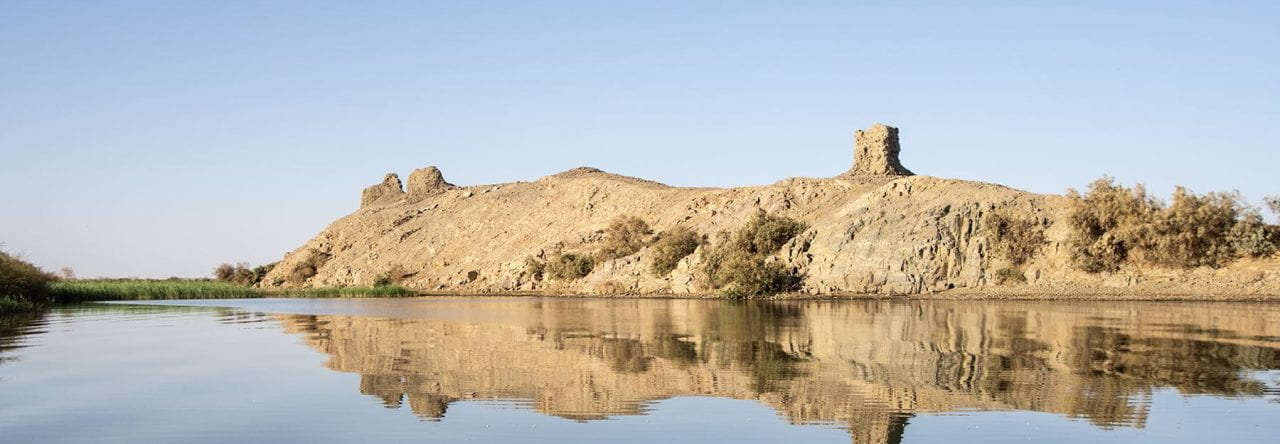Uronarti, an island in the Nile in Lower Nubia (modern Sudan), was the site of a major fortress constructed by the kings of the Egyptian Twelfth Dynasty. The fortress on Uronarti is one of a string of massive mudbrick fortifications with thick walls and military installations such as dry moats and arrow loops that are awe-inspiring in their size and for their great antiquity. The Egyptians heavily fortified this region for a variety of interconnected reasons. The deserts in this area were rich sources for gold-mining. A growing Nubian power was developing to the south, based at the site of Kerma, and this was a military threat to Egypt’s south. The Nile was also a critical corridor for trade with sub-Saharan Africa, and the Middle Kingdom kings of Egypt wanted to control that trade. Finally, building massive, intimidating buildings was a display of the wealth and prowess of the pharaohs. Economy, military needs, and royal ideology meshed into Egypt’s first great colonial expansion, and the forts of Lower Nubia were an integral part of it.
The system of forts was initiated in the early 12th Dynasty, around 1950 B.C., and reached its apex in the later 12th Dynasty, under the king Senwosret III, who reigned from approximately 1878-39 B.C. When complete, the fortress system controlled the approximately 320km (200 miles) from the traditional southern border of Egypt at the First Cataract at Aswan south to Semna, just upriver from the Second Cataract.

Map of Lower Nubia showing the Egyptian fortresses of the middle Kingdom.
Of the original fortresses, only two remain above water after the creation of the lake behind the Aswan High Dam. The area today is almost entirely unpopulated and had not seen archaeological research since the construction of the dam in the 1960s. Uronarti itself was initially dug in the late 1920s and early 1930s in a series of lightening-fast campaigns overseen by Noel Wheeler. The Uronarti Regional Archaeological Project was founded in 2012, and is a joint mission of Brown University and Swansea University, in cooperation with the National Corporation for Antiquities and Museums in Sudan. Our aim is to bring not only new questions – our views of colonialism have changed dramatically since the early 20th century – but new archaeological and technological tools to the study of this ancient place and its people. We are working to document the fortress but also to excavate the remains of human activity outside it, to better comprehend its setting in a complex physical and cultural landscape, and to illuminate the relationships between Egypt and Nubia at the edges of their worlds.
